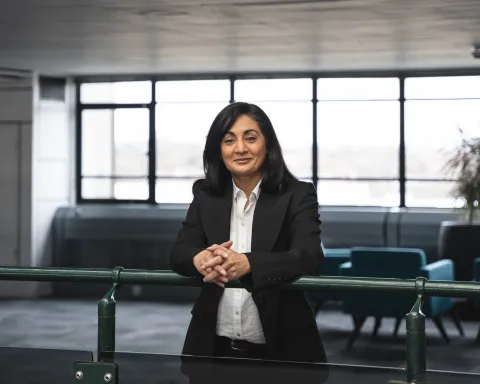Through celebrating the achievements of women in science, technology, engineering, and maths (STEM), Ada Lovelace Day aims to raise the profile of women in STEM, and in doing so, create new role models who will encourage more girls to pursue STEM careers.
To mark Ada Lovelace Day 2023, we sat down with ValiRx’s preclinical project manager, Zai Ahmad, to discuss her experiences and the STEM landscape for women.
A passion for the way the world works
With a Master of Philosophy degree in Neuroscience from the University of Leeds, and several peer-reviewed manuscripts under her belt, Zai has enjoyed a varied career in the life science industry and drug development, across both neuroscience and oncology.
Her interest in science was ignited at a young age when she found a passion for the way the world works.
“I’ve always enjoyed learning about the inner workings of things and looking at the world from different perspectives,” Zai explains. “I remember my brother stating that earthworms have four hearts and me telling him to prove it! My inquisitive nature meant that I naturally fell into science, and it kept me interested and engaged. There were few girls in science particularly in A-level physics, where I was one of the three in a class of 25. Chemistry and biology weren’t so imbalanced. However, my curiosity for science stayed with me, and later down the line, lent itself well to a career in biology and drug discovery and development.”
STEM in schools and universities
According to data from STEM Women, just 27% of graduates in the core STEM subjects during 2019-2022 were female. Whilst it’s encouraging to see that this number has increased, albeit marginally, from previous years, male graduates still make up the vast majority and women continue to be underrepresented.
Zai believes diversity is key in helping scientific teams solve complex problems. She continues: “Everyone has their own unique way of looking at things, so considering different perspectives is paramount, particularly in drug discovery. I believe in encouraging every student or team member to have a voice by encouraging them to share their views, especially the quieter ones who may be overlooked. Their contribution might have the power to change your whole perspective!”
Zai notes that there have been some much-needed positive shifts in the landscape for young people and STEM: “The availability of more robust career advice at schools and colleges is a great improvement, and thankfully no longer just consists of a basic multiple choice that pulls up random careers that don’t appeal. Understanding the variety of STEM career pathways and the opportunities that are out there is essential and can really help students see where their skills and interests may fit.
“Other positive changes we have seen include more female educators teaching STEM subjects – which was a rarity when I was at school – and talks and demonstrations being held at schools by pharma companies like AstraZeneca. There is also more widespread access to learning resources, with platforms like YouTube providing a wide range of useful, free content.”
STEM in the workforce
When it comes to the STEM workforce, the latest figures show that the representation of women remains low, at just over one quarter of the overall workforce. Whilst this is a small increase to previous years, more work is needed to encourage women to study STEM subjects and transition into the workforce.
“Getting young people into labs at an early stage to see first-hand how it works is really important. Science clubs and fairs also help provide an early exposure to the practical element, allowing students to be hands-on in a fun environment.” Zai explains. “In the media, science is often depicted using colourful, exciting experiments with instant and miraculous results that save the world, but in reality, laboratory work is much more considered and slower in pace. By gaining exposure to what working in a lab is actually like, a career in the sciences becomes more tangible, and students can understand if the work is suited to them. It’s also important to understand that science will vary between labs and organisations, so it’s important to try a few to find the right fit.”
Find out more about Zai’s role at ValiRx and Inaphaea here.
Looking to the future
ValiRx and Inaphaea are committed to supporting the future of women in STEM. Over the summer, our Inaphaea BioLabs team was delighted to welcome three university students to complete placements at the lab. We have been delighted to play a part in their career journeys and look forward to sharing more about their experiences soon.
STEM Women has been hosting networking and career events for STEM students and recent graduates since 2018. To find out more about the work the organisation is doing to bridge the gender gap in STEM, click here and learn more about Ada Lovelace Day here.
